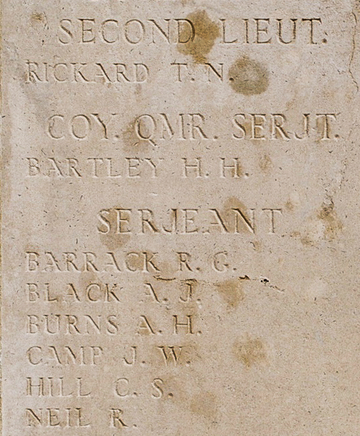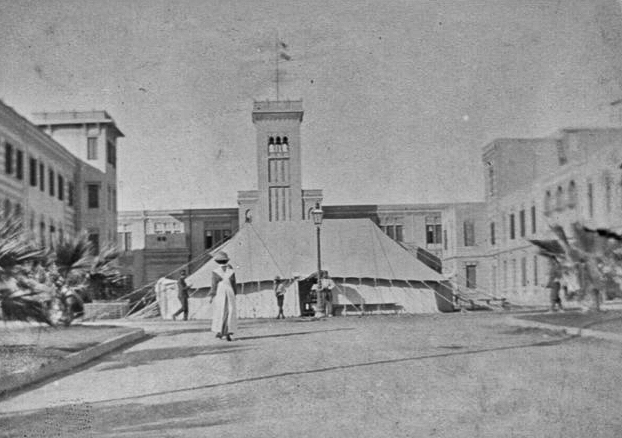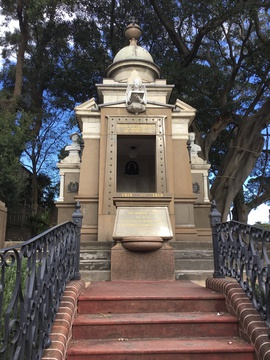Charles Stevens HILL
Eyes blue, Hair fair, Complexion fair
Charles Stevens Hill recovered by the Germans
Can you help identify him?
Charles’s body was recovered by the Germans after the battle, but there are no records of his burial. There still is a chance he might be identified, but we need help.
A mass grave of 250 bodies was found in 2008. The Germans had dug the grave for bodies they recovered shortly after the battle. More than half of these soldiers have been identified and given proper burials and recognition through finding family DNA donors. For those remaining, some identifications are highly likely. We just need to find DNA donors.
Charles did not have any family in Australia that we know of, but it is clear that he had strong ties back in East Molesey, Surrey, England, including his parents Alexander Hill and Ellen Stevens. We are particularly looking for the female line from his mum, Ellen nee Stevens, and grandmother, Mary nee Vaughans, whose families originated in the Kingston on Thames district in Surrey.
If you know anything of Charles’ contacts here in Australia or his relatives in Surrey, England we would like to hear from you. See the DNA box at the end of the story for what we do know about his family.
Background: England to Australia 1911
Charles’ birth was registered in England in the 1888 in the Kingston on Thames district. His name was given as Charles Hill Stevens with no mother’s maiden name recorded on the index. This generally indicates an illegitimate birth, an assumption that is corroborated by a notation of “illegitimate” added by the vicar on Charles’ baptism record. The baptism occurred on 24 June 1888 in East Molesey, Surrey – the same day as Ellen Stevens and Alexander Hill married. He was baptised as Charles Stevens Hill.
Alexander, a gardener, and Ellen went on to have two further children, Ellen Lydia born 1889 and Alexander born 1891.
Charles attended the East Molesey National School, but by the time he was 12 he was working as an errand boy. He had an early interest in the military, first in the Church Lads’ Brigade and later serving 18 months in the UK Territorial Army (reservists).
Charles emigrated to Australia when he was 23, presumably seeking better prospects for work. He was aboard the Roon from Bremerhaven to Sydney via Melbourne, arriving 1 July 1911. He found work as a labourer and was living at 52 Darling Street in Glebe, an inner Sydney suburb when he enlisted. Records indicate that he had also purchased land in the Sydney suburb of Auburn so was presumably making good on those hoped for ‘better prospects’ in Australia.
Early to serve – Off to Gallipoli
Charles’ ties to England must have remained strong as he enlisted in the AIF on 29 August 1914, only a month after the war began. He was assigned to the 1st Battalion, G Company. Training for the recruits was at the Randwick Racecourse grounds and it was both very basic and very short. A number of the recruits were noted as not having any experience with a rifle.
Less than two months after Charles enlisted, he left Australia aboard HMAT A19 Afric headed for Egypt. The soldiers disembarked in Alexandria on 8 December 1914. Training continued at the Mena Camp outside Cairo and the battalion was reorganized into four companies with Charles being assigned to D Company.
By early April 1915, Charles was enroute to Gallipoli, departing Alexandria on the 10th. They first sailed to Mudros harbour on Lemnos Island where they practised disembarking into landing vessels and beach landings. Two weeks later they were headed for Gallipoli.
On 25 April, Charles’ battalion was a part of the second and third waves of the landings at Kapa Tepe, Anzac Cove. Disembarking began at 6.45am and by 7.30 they were ashore, surprisingly, without loss. By 8:30, the orders to move forward came through and by 10:00am the entire battalion was “thrown into the firing line”
Source: AWM 1st Battalion War Diaries
The Australians advanced to the heights overlooking the beachhead, but the Turks regained control of the heights and the Battalion was forced to withdraw.
During the landing battle, Charles received a gunshot wound to his right hand. He was evacuated and sent to Alexandria General Hospital No. 17, arriving on 1 May.
Charles was treated and discharged on 31 May. He rejoined his unit in mid-June while they were being moved from Gallipoli to the nearby island of Imbros for a rest.
On 6 July the Battalion was back ashore at Anzac Cove. While they were in and out of the front lines, there was no major activity in July. On 4 August, however, they received orders for a major assault at Lone Pine.
The attack began at 5.30pm on 6 August and, after only an hour, the Australians had captured the Turkish positions. The plan had called for the 1st Battalion to be in reserve, however by late in the afternoon they were called into action. Fighting continued until 11.00pm.
Heavy counter attacks from the Turks began at 5.30 the next morning. The 1st was relieved at 11.35am, but by 3.10pm they were called back and by 6.00pm they “were now all absorbed in Lone Pine and holding centre of position”. Fighting continued into the night until 11.30pm.
Early on the 8th, the unit’s war diaries (AWM) record that there was a “fresh counter attack, very violent”. “Men extremely tired but determined to hold on”. They were finally relieved at 2:00pm. Luckily, Charles was not wounded during these three days of heavy fighting.
The 1st Battalion remained in the vicinity until early September when the remaining 287 men departed for Lemnos where they stayed until the end of October. They returned to Anzac Cove, but there was no major action and they finally left Gallipoli in late December, returning to Egypt just after Christmas.
For his efforts during the campaign, Charles was promoted to Corporal on 14 August and to Sergeant on 14 December 1915.
Regrouping in Egypt, then on to the Western Front
After arriving in Egypt, major reorganisations were underway to accommodate the heavy losses from Gallipoli and all of the new recruits coming in from Australia. Charles was reassigned to the newly formed 53rd Battalion on 13 February 1916. Two of Charles’ mates, Sergeant Arthur L. Harrison (2825A) and Sergeant Albert E. Harrison (1100) - two brothers from Lismore - were also in the 53rd.
Training continued to integrate the new recruits with the Gallipoli veterans and the Battalion spent some time in the defending the Suez Canal.
Orders came in mid-June 1916 for the 53rd to head for the Western Front to join the British Expeditionary Force. Charles left Egypt aboard the “Royal George” on 19 June, arriving in Marseille 28 June 1916. They then had a 62-hour train ride to Thiennes. It was noted that their “reputation had evidently preceded them” as they were well received by the French at the towns all along the route.
After leaving the train, the Battalion had several days of marching to cover the remaining 35 kilometres to Fleurbaix where they were settled into billets on 16 July. Early the next morning the 53rd were moved to the front line preparing for an attack, but it was cancelled due to bad weather. They remained in the trenches on the 18th in relief for the 54th Battalion. There was severe bombardment all night by both the British Expeditionary Force and the Germans.
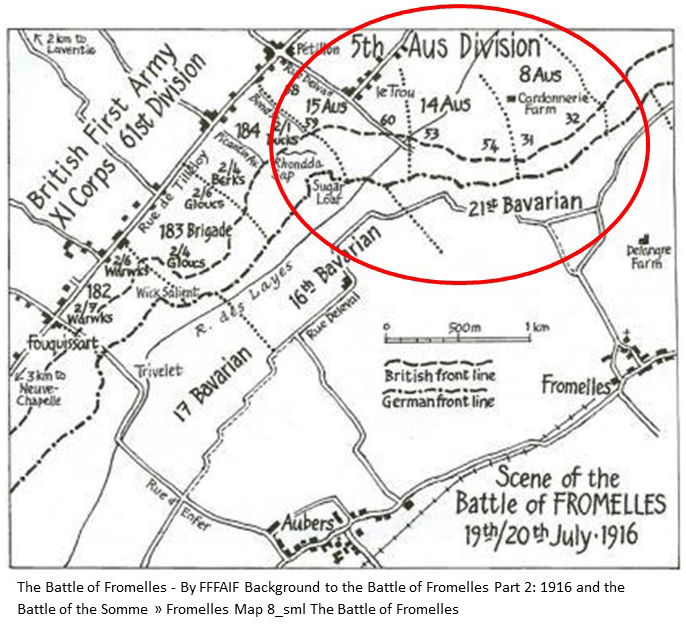
At 4.00pm on the 19th, the 54th Battalion returned to the front line, placing Charles’ 53rd between the 54th and the 60th. The Australians’ attack began at 5.43pm.
The 53rd advanced in four waves. The first waves did not immediately charge from the Australian line, but went out into No-Man’s-Land and laid down, waiting for the British bombardment to lift. At 6.00pm, the Germans were rushed, their front line was captured and the Australians headed for the second line where they linked up with the 54th on their left. However, the 60th Battalion was held up due to the heavily defended machine gun emplacement at the Sugar Loaf salient across from their position.
Attacks continued and their lines were held through the night, but the Germans were counterattacking on their front and right flank and the trenches that were captured had to be given back.
By 9.00am on the 20th, the 53rd received orders to retreat from positions won and by 9:30 they had “retired with very heavy loss”. By 4:30 PM the remains of Brigade assembled at HQ. Of the 984 men who had left Alexandria just weeks earlier, 372 were killed or missing and 335 were wounded.
Charles’ fate
Charles had made it well into the German trenches but, as reported by his mate Arthur Harrison, he had been killed by a hand grenade in the enemy communication trench. Another soldier, James Alfred Amey (4735) had similarly reported that Charles was killed by a shell, and also that he “was probably not buried”.

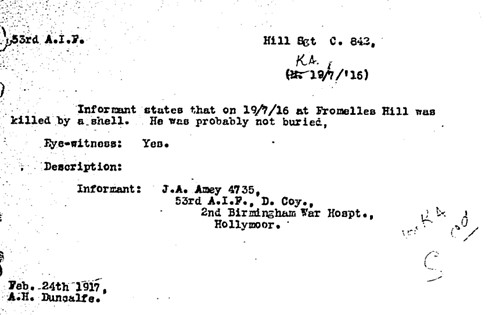
Charles’ body was recovered by the Germans. His identity disc was received by the British on 12 October 1916 and the Royal Prussian War Office Medical Section noted that he “fell in the neighbourhood of Fromelles”.
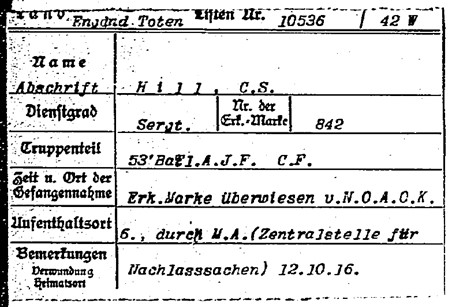
He was reported as missing in action until a formal review was held on 15 February 1917 in which he was confirmed as being killed in action. It was shortly after this in May 1917 that his identity disc was sent to his family in East Molesey England.
After the war, Charles was awarded the 1914-15 Star, the British War Medal, the Victory Medal, a Memorial Scroll and a Memorial Plaque. These were issued to his mother as next of kin.
Gone, but not forgotten
In addition to being commemorated at the VC Corner memorial at Fromelles (panel 7) and at the Australian War Memorial in Canberra (panel 157), Charles is also commemorated both in Glebe, New South Wales and in East Molesey, Surrey, United Kingdom.
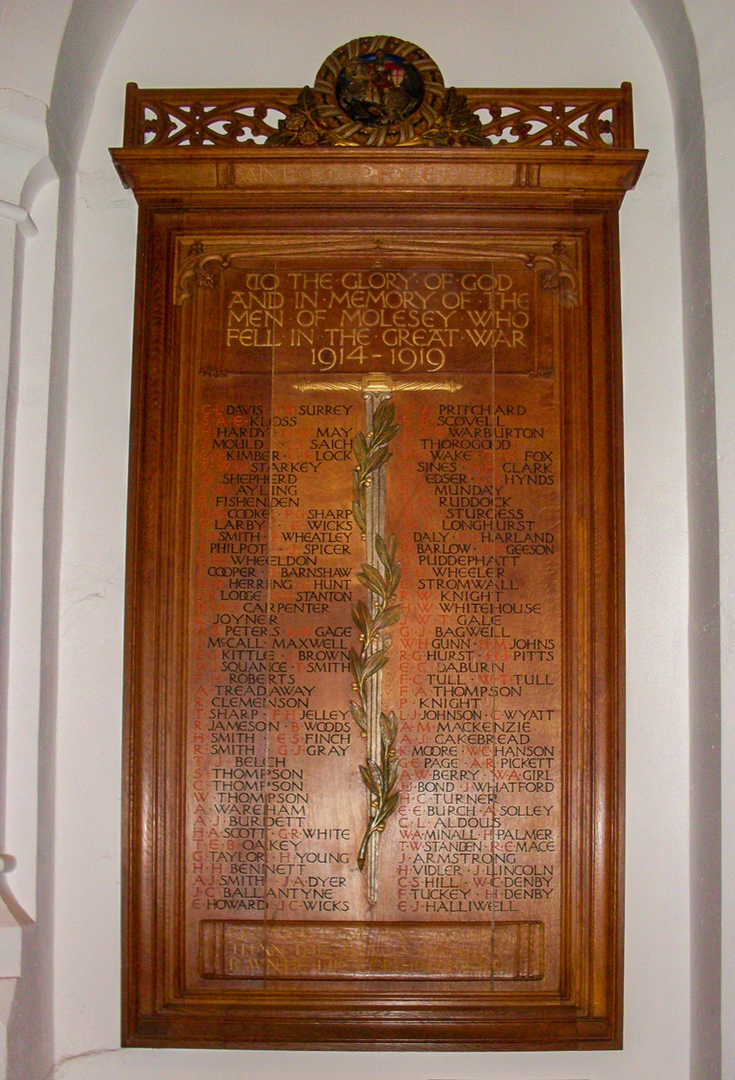
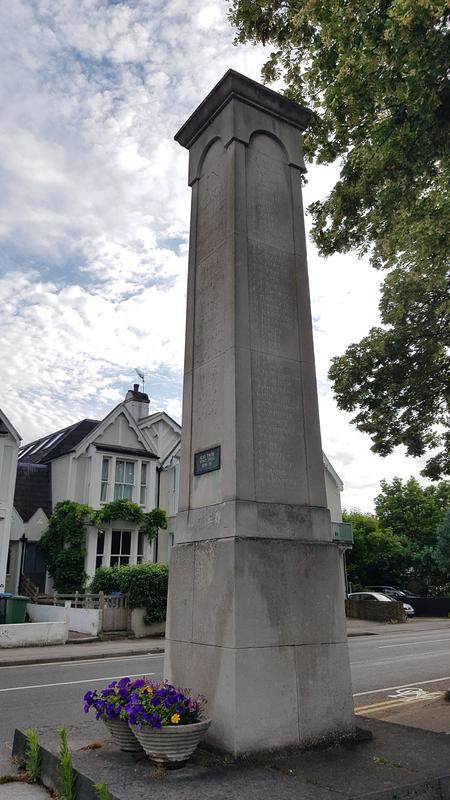
We still hope to identify Charles
As noted earlier, Charles’ body would have been recovered by the Germans, but his burial site is unknown. It is possible that he is one of the yet to be identified soldiers from the mass grave dug by the Germans and only discovered in 2008.
If you know anything of Charles’s contacts in Australia or in England, we would like to hear from you. His will also mentions a Millicent Ellen Smith of Cherry Hinton, near Cambridge, UK, but his relationship with her is unknown.
DNA samples are being sought for family connections to
| Soldier | Charles Stevens HILL 1888 - 1916 |
| Parents | Alexander HILL 1860 -1924 and Ellen STEVENS 1864 - 1932 from Kingston and East Molesey Surrey. |
| Siblings | Ellen Lydia 1889-1976) | ||
| Alexander Hill 1891 - 1918 |
| Grandparents | |||
| Paternal | William HILL 1828 – 1882 and Lydia DWIGHT 1845 – 1928 | ||
| Maternal | Charles William STEVENS 1822 – 1875 and Mary VAUGHANS 1828 – 1906 |
Note. Beneficiaries of soldier’s will included a Millicent Ellen SMITH of Cherry Hinton near Cambridge but the nature of any connection is unknown.
Links to Official Records
The Fromelles Association would love to hear from you

Contacts
(Contact: carla@fromelles.info or geoffrey@fromelles.info).
(Contact: army.uwc@defence.gov.au or phone 1800 019 090).
Donations
If you are able, please contribute to the upkeep of this resource.
(Contact: bill@fromelles.info ).
